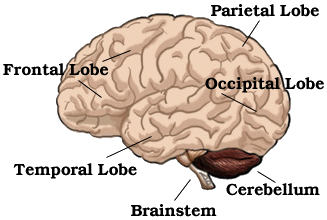 |
| Figure 1. Diagram of the Human Brain with the Parietal, Occipital and Temporal Lobes Reprinted from [brain injury link]. |
 |
| Figure 1. Diagram of the Human Brain with the Parietal, Occipital and Temporal Lobes Reprinted from [brain injury link]. |
 |
| Figure 2. Diagram of the Human Brain with Several Vision Related Parts. Reprinted from [13] |